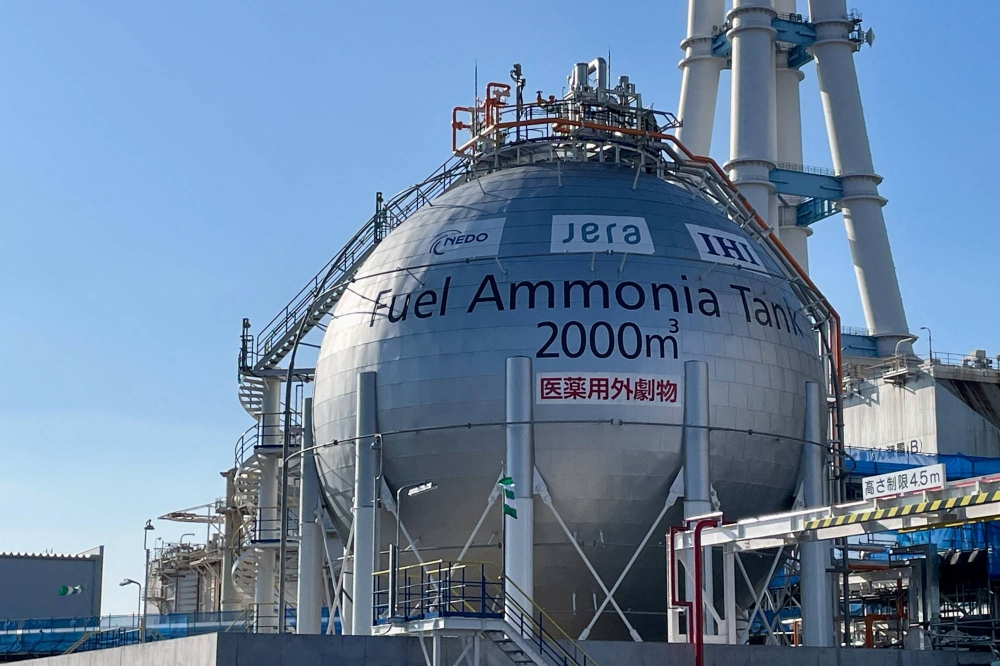Jera said on Monday that it has begun a demonstration of co-firing 20% of ammonia with coal at its Hekinan thermal power station in Aichi Prefecture, in what it said is the world’s first trial using a large amount of the gas at a major commercial plant.
Japan’s top power generator initially planned to start the trial from Tuesday last week, but it was delayed for about a week, as the testing of equipment and other things required time to ensure safety.
The trial could move Japan, the world’s fifth-biggest carbon dioxide emitter, a step closer to its goal of using ammonia and hydrogen in thermal power generation to aid in reaching its 2050 goal of carbon neutrality.
Environmentalists have criticized the move as a way to extend the life of dirty coal-fired power generation.
Jera, a joint venture between Tokyo Electric Power Co. and Chubu Electric Power, will conduct the trial, together with heavy machinery-maker IHI, for about three months to check characteristics of the plant overall, including nitrogen oxide emissions and the impact on boilers and ancillary equipment.
Ammonia is mainly made from hydrogen produced from natural gas and nitrogen from the air. It does not emit carbon dioxide when burned, but its production releases emissions if it is made with fossil fuels.
“Ammonia is an efficient, low-cost means of transporting and storing hydrogen,” Jera said in a statement, adding other benefits include direct utilization as a fuel in thermal power generation.
“This project is important as it may offer a low-cost first step to quickly advance the decarbonisation in countries like Japan that need thermal power generation as an adjustable power source to ensure a stable supply of energy,” Jera said.
Jera aims to start ammonia co-firing on a commercial basis at the Hekinan No. 4 unit as early as 2027, and a trial of replacing 50% of coal with ammonia at its No. 5 unit in around 2028.

